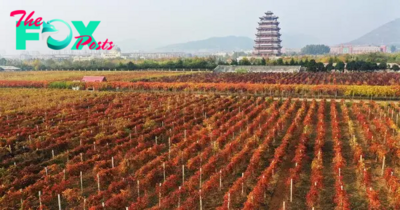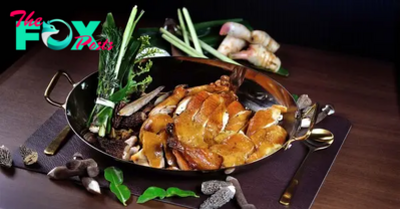Lifestyle
Eat Your Greens: Michelin Green Star Chefs Share Their Thoughts of Sustainable Dining
As this city continues to struggle with waste, the four Hong Kong restaurants with Michelin Green Stars share their insights on sustainable cooking and dining.
Hong Kong is a city of abundance. On almost any street, you’ll find dozens of restaurants, supermarkets and convenience stores. Pull out your phone, select the appropriate app and you can order any meal you want from thousands of restaurants. Marketing teams have perfected consumer strategies that range from chain franchises’ loyalty programmes to minimum charges or delivery orders. But while we’ve all grown so attached to the plentiful choices and convenience we’ve been spoiled with, we’re now met with a crisis that has become increasingly more dire: overconsumption.
In a conversation last year with Feeding Hong Kong founder Gabrielle Kirstein, she told me, “Every day, 3,400 tonnes of food waste go to landfills, which is equivalent to 8 million meals in a city of 7.5 million people.” With such staggering numbers, it’s no surprise the government decided to implement a municipal solid waste charging scheme, which was originally due to come into force this month. But, as if a testament to just how spoiled we’ve become, negative public feedback has forced the scheme to be pushed back till August.

Indeed, the efficacy of this new scheme – should it ever come into effect – remains a question, given our habits of over-consumption. “On my arrival in Hong Kong in 2004, I was somewhat shocked by the opulence of the almost 8 million people here,” says Richard Ekkebus Amber, executive chef of Amber. “Hong Kong eats the most meat per capita in the world, and it’s the largest market for industrially farmed Brazilian beef, which has direct ties with the deforestation of the Amazon. Per capita, this city ranks second in seafood consumption in Asia and eighth in the world. Because the fish biomass in parts of the South China Seas has been reduced by more than 50 percent since the 1960s, Hong Kong now depends on imports for 90 percent of our seafood, making us the 10th-largest importer in the world. Evidently, Hong Kong’s unsatisfying hunger for animal protein and seafood is an unsustainable situation.”
The problem isn’t unique to Hong Kong. Sustainability concerns have been aired almost everywhere in the world during the last century, with advocates for greener Lifestyles and Businesses becoming increasingly prominent in recent years, perhaps due to the very real effects of climate change and declining biodiversity. “I’m not a food-system or climate-change expert,” Ekkebus adds. “But I am an expert on my own kitchen and the food that arrives in my restaurants. What we’re receiving has changed – how it looks, when the season starts, the sizes available, where they come from. Some aren’t even available anymore. It’s impossible to ignore when you’re working with food every day. In fact, it’s scary.”
It’s clear that what – and how – we consume must change, and in 2021 one of the world’s most revered restaurant rating organisations decided to raise awareness of the issue when the Michelin Guide began recognising restaurants’ sustainability efforts with the introduction of Green Stars. In Hong Kong, British chef Simon Rogan’s Roganic was the first to receive the accolade, followed by Ekkebus’ Amber and Vicky Lau’s Mora. Just last month, David Toutain’s Feuille, under the leadership of chef Joris Rousseau, joined their ranks by becoming the fourth restaurant to receive the Green Star.

“This recognition goes beyond creativity and flavours,” says Rousseau. “It represents a shift in mentality towards sustainable gAstronomy.” Lau, who was inspired by the pandemic to shift the way she thought about gAstronomy, produce and waste, concurs. “The Michelin Green Star recognises individuals who’ve made a positive impact on their surroundings and serve as inspirations to others,” she says. “Whether it involves collaborating with local farmers, supporting community initiatives or contributing to charitable causes, the recipients of the award exemplify the values that the industry should uphold.
“It’s our responsibility to protect and preserve our natural resources for future generations. Embracing sustainable practices in cooking allows us to minimise our ecological footprint and reduce waste, which in turn contributes to the long-term Health and wellbeing of our environment.”
Compared to the almost century-long History of its more famous restaurant stars, Michelin’s Green Stars are still in their infancy, so it’s understandable why many diners continue to prioritise one-, two- and three-star ratings. But if we’re serious about addressing overconsumption in Hong Kong, this trend needs to change – and Lau, for one, is optimistic.

“The Green Star has been introduced relatively recently, and it’ll take time for its meaning and significance to be fully understood by everyone,” she says. “But I believe it will naturally gain more prominence over time as more chefs step out of their comfort zones and embrace working with local and sustainable ingredients.
“There’s also a growing demand among consumers for restaurants to be more conscious of sustainability,” she adds, reflecting on how diners at Mora have responded to their experiences there. “This demand will push sustainability to the forefront and elevate the importance of the Green Star.”
If you’re a chef reading this, at this point you might be thinking that cooking only with sustainably sourced ingredients while minimising waste isn’t easy – and may even compromise the quality of your food, but all four chefs whose restaurants carry Green Stars would disagree.

“I don’t think it limits creativity, because it makes you think about how you can substitute certain ingredients,” Rogan tells me. “And with what we do have, we find new ways of using them. A plant, for example, has many parts, and we learn to use every part of it. Sure, it might limit us in what ingredients we have access to, but we make good use of the stuff we do get. I think it pushes us to be even more creative.”
Rousseau regards it more as a “guiding principle” than a restriction. “Rather than viewing sustainability as a limitation, it inspires me to think more creatively about the ingredients I use,” he says, echoing Rogan. “I embrace the concept of creating dishes based on what the farmers have available, allowing their seasonal produce to guide my culinary creations. It encourages me to explore new flavour combinations, techniques and presentations, resulting in more unique and exciting dishes that showcase the best of sustainable ingredients.”
So what can we do, whether we’re restaurateurs, diners or home cooks? For a start, Ekkebus says restaurants and bars should be working with organisations such as Food Made Good and Future Green, which provide assistance and toolkits that help achieve progress in this field. “We’ll recognise it’s actually very simple to make meaningful changes in the way we operate, which can alter our restaurant’s daily impact on the environment.”
As for the rest of us, Ekkebus recommends reducing plastic waste by eschewing bottled water and opting instead for high-quality water filters at home. “Eat seasonal and eat more local and regional produce if possible,” he adds. “Support small organic farmer communities in Hong Kong, and support local charity organisations, whether through money or time.” Of course, you can always choose to dine at restaurants working sustainably, especially the four in Hong Kong with Michelin Green Stars: Roganic, Amber, Mora and Feuille.
-

 Lifestyle1h ago
Lifestyle1h agoOverwhelmed by the Scorching Beauty of Pandora Kaaki: An Enchanting Vision Capturing Hearts with Irresistible Charm
-

 Lifestyle1h ago
Lifestyle1h agoOlivia: A Mesmerizing Fusion of American and Spanish Heritage with an Allure Beyond Boundaries
-

 Lifestyle1h ago
Lifestyle1h agoHow to Grow a Hydrangea Tree: All You Need To Know
-

 Lifestyle2h ago
Lifestyle2h agoThe whole internet coIIaborated to determine what this kitchen tooI was
-

 Lifestyle2h ago
Lifestyle2h agoThe Incredible Change: From a Small Troublemaker to a Funny Movie Star!
-

 Lifestyle2h ago
Lifestyle2h agoThe lucky couple gave birth twice, 7 years apart. The special thing is that both babies have two different skin colors, making everyone surprised
-

 Lifestyle2h ago
Lifestyle2h agoTwo арtᴜгe sisters share adorable parenting moments expected and planned since childhood
-

 Lifestyle3h ago
Lifestyle3h agoAlia Bhatt joins 'Blockout 2024' list of celebrities under fire































